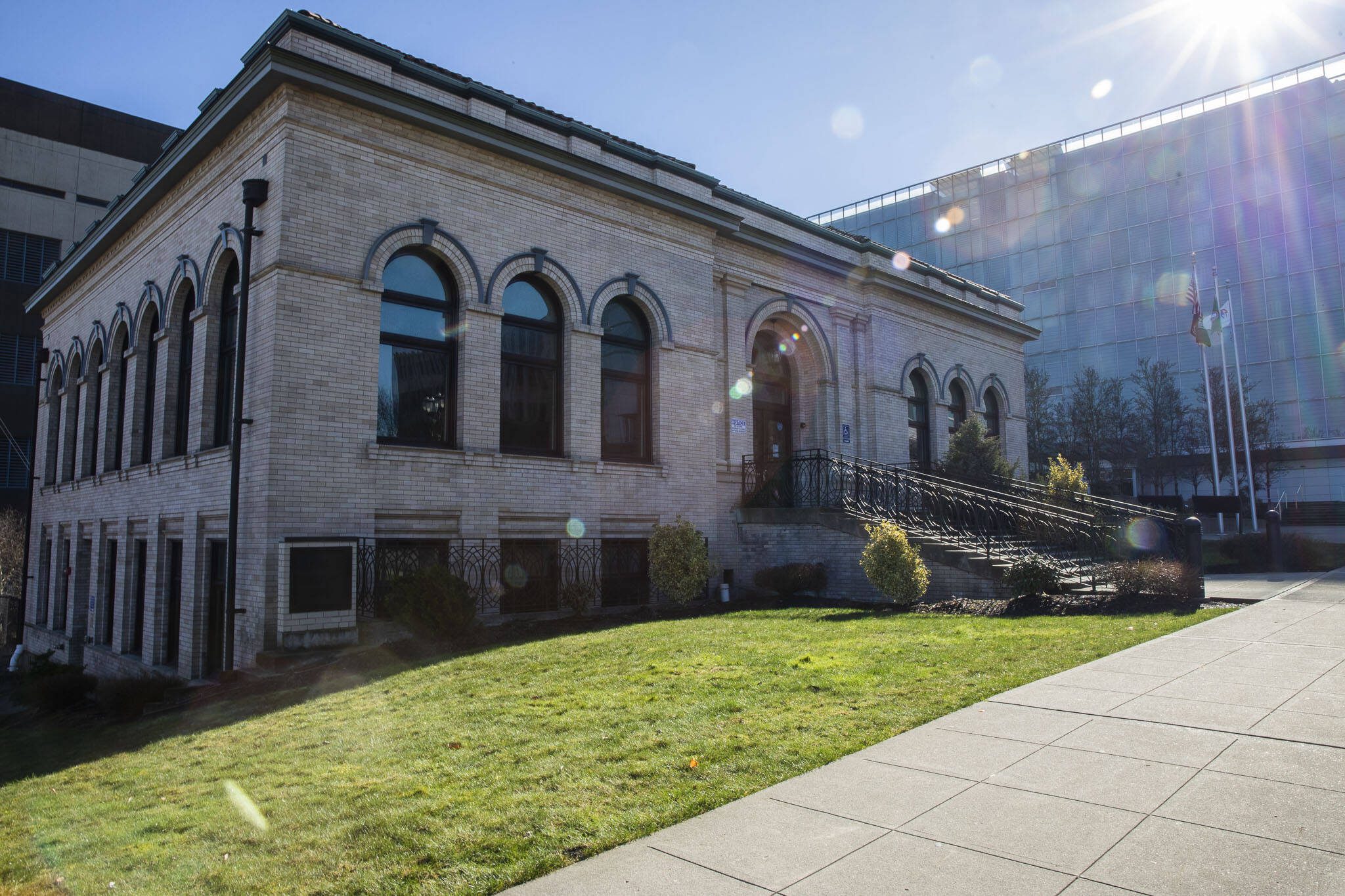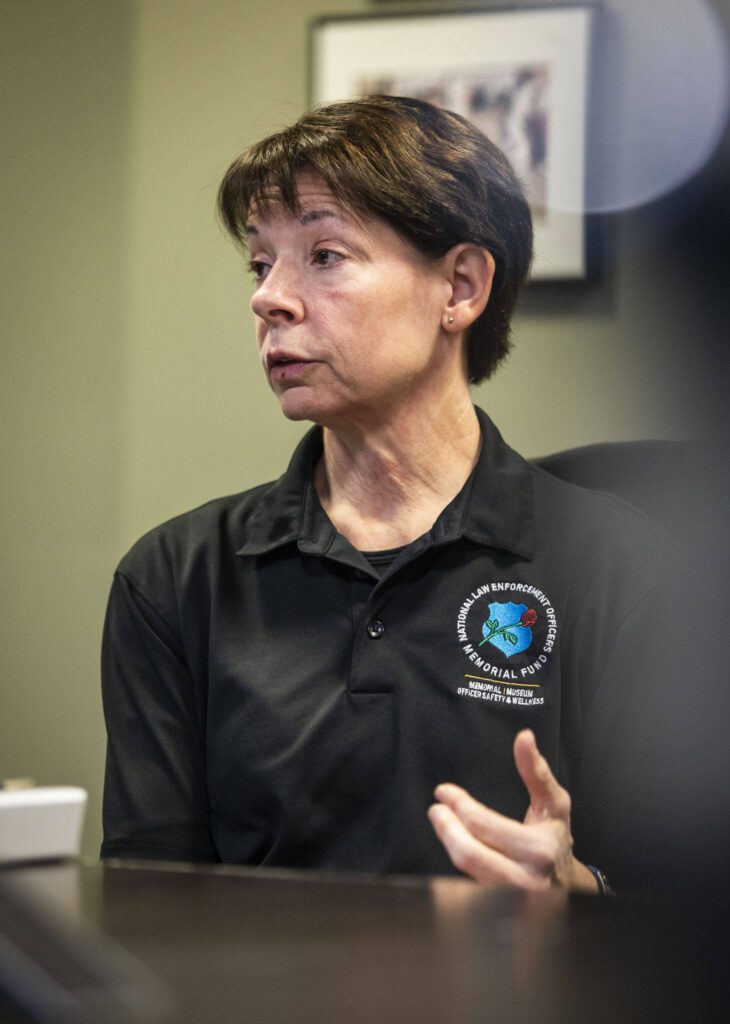EVERETT — Snohomish County leaders say public safety is on the ballot this November. But it comes with a cost for consumers.
From 2021 to 2023, the sheriff’s office saw an average of 1,022 vehicle thefts, 933 burglaries and 380 assaults per year. Last year, more than 250 residents died of a fentanyl overdose.
The county has allocated millions to programs that help people out of poverty and addiction and boost the criminal justice system. This year, overdoses and crime have declined. But County Executive Dave Somers and other local officials say the county’s $1.6 billion annual budget still can’t keep up with the need.
This year, Somers worked with a team of local experts to brainstorm solutions. They proposed a public safety sales tax of an additional two-tenths of 1%, or about 2 cents for every $10 spent on retail in the county. The county can ask for up to three-tenths of 1% under state law.
In July, the County Council voted unanimously to put the tax on the ballot. It will need a simple majority of votes to pass.
The tax would garner about $40 million per year to help prevent crime, violence and substance abuse. The county would get 60% of the money, a predicted $24 million per year. It would distribute the rest, about $16 million per year, among cities based on population.
The county would allocate more than half its share to criminal justice programs, in line with state law. That includes hiring sheriff’s deputies, attorneys and court staff, as well as expanding drug treatment in the jail. The rest, an estimated $11.63 million per year, would go to other public safety efforts. That includes a new resource center, involuntary treatment facility and street cleanup programs.
State law requires cities to spend at least one-third of the potential tax revenue on criminal justice, but they wouldn’t need to spend their share the same way as the county.
‘Making life harder’
Somers’ tax would apply to most retail sales in the county. It would cost residents less than $1 per week, or $47 to $50 a year, said county Prosecuting Attorney Jason Cummings. Some exemptions include prescription medication, food ingredients at grocery stores, vehicles sales and the first three years of vehicle lease payments.
At 9.38%, Washington has the fourth highest combined state and local tax rates in the United States, according to the Tax Foundation. Sales tax rates in Snohomish County range from 9.1% to 10.6%, higher than the state’s rate of 6.5%. Lynnwood, Mukilteo and Mill Creek are tied for the highest sales tax in Washington.
Billye Brooks-Sebastiani, former chair of the county Republican Party, and other conservatives have come out against the tax. Costs are already too high, they argue, and more taxes would burden residents. The county should instead work on policies that crack down on crime, they say.
“Snohomish County already has the highest sales taxes in our state,” their argument in the voters’ pamphlet reads. They added the proposal would make “life harder for those on tight budgets or fixed incomes. And raising the sales tax will push shoppers to go to nearby counties with lower taxes, hurting local businesses.”
Another tax is not ideal, agreed Jason Biermann, senior policy advisor to Somers. But he argued the benefits to residents — including cleaned graffiti, fewer abandoned vehicles and more accountability — would offset the costs. And a sales tax, when compared with a property tax, is “a fairer way to make sure that everyone who is benefiting is contributing,” he said.
“Regressive tax systems are always penalizing the folks who are struggling,” Biermann said. “We’re very sensitive to that.”
The county tried to pass a similar tax in 2016, but failed. Back then, the county didn’t provide enough information on the measure to reassure voters, Biermann said.
Somers and county Democrats also support a bill that would allow the county and cities to impose a tax increase of up to three-tenths of 1% without a public vote. State legislators introduced the bill earlier this year.
‘We are squeezed’
Back in 1998, when Somers first joined the County Council, the county spent about 56% of its general fund budget on public safety. Now it’s up to about 75%, but he said it’s still not enough.
“We’re actually cutting programs every year because our general fund is not even growing as fast as inflation,” Somers said at a virtual town hall last week. “Our total budget’s about two-thirds of Pierce County, and we’re a similar sized county, so we are squeezed.”
The county is always looking for state and federal grants, but that money often takes awhile to get and runs out within a year or two. And, the spending is out of Snohomish County voters’ control.
“The team here won’t stop looking for opportunities for funding,” said county spokesperson Kari Bray, “but we really need a sustainable local source.”
County Sheriff Susanna Johnson said staffing up her department would help deputies address “lower-level, non-violent crime” the county has limited resources for.
“By getting to that,” she said, “we can help direct those individuals into therapeutic courts, into our (Therapeutic Alternatives to Prosecution) and diversion programs … and into our mental health courts.”
The county needs programs to address violent crime among teens, Biermann said, as well as beds for involuntary drug treatment. Right now, the state only has two involuntary detox facilities, and neither are in or near Snohomish County.
“Without this tax,” Biermann said, “we may not have those facilities for the foreseeable future.”
For law and justice efforts, the county predicts it would spend:
• $4.25 million to hire about 33 patrol deputies, corrections deputies and park rangers;
• $2.7 million to hire about 22 attorneys, paralegals or other staff at the prosecutor’s office;
• $2.34 million to hire about 15 attorneys, paralegals or other staff at the public defense office;
• $2.34 million to hire about 19 managers, coordinators and other staff at the courts; and
• $500,000 to expand medication-assisted drug treatment at the county jail.
For other public safety efforts, the county predicts it would spend:
• $4.5 million to create a 48-bed involuntary detox facility;
• $2.5 million for a new resource center, similar to the one at the Carnegie Building in Everett;
• $1.65 million for a nurse emergency call line and more Emergency Medical Services staff;
• $1.4 million to remove graffiti and abandoned vehicles;
• $1.4 million for youth violence prevention programs; and
• $180,000 for 911 data services at the county’s Emergency Medical Services office.
Contact publicsafetyst@snoco.org or visit yessafesnoco.com for more information. The state Department of Revenue has an online tool to look up sales tax rates by location.
Ballots are due Nov. 5.
Sydney Jackson: 425-339-3430; sydney.jackson@heraldnet.com; X: @_sydneyajackson.
Talk to us
> Give us your news tips.
> Send us a letter to the editor.
> More Herald contact information.


























